Avoid your inquiry is delay response, please enter your WhatsApp/Skype along with the message, so we can contact you at the very first time.
We will reply you within 24 hours. If for urgent case, please add WhatsApp/WeChat: +8613791936882 ,. Or call +86-18678911083 directly.
Robot lawn mowers are an investment in convenience and innovation. But how long can you expect one to last? Let’s dive into the lifespan of these nifty machines.
The life expectancy of a robot lawn mower typically ranges from 5 to 10 years, depending on factors like model, maintenance, and usage. Regular care can extend its longevity.
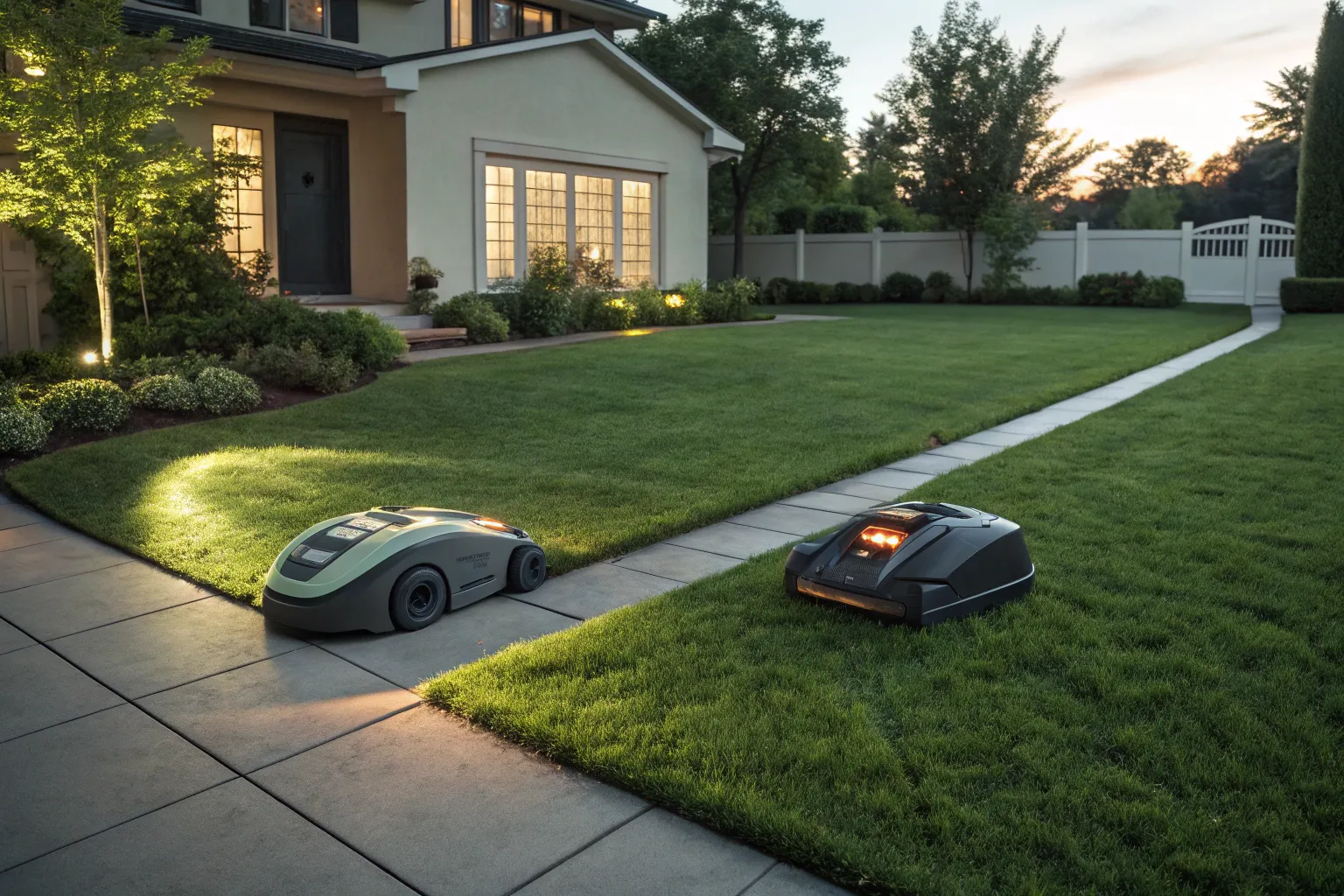
robot mower on grass
Now that we know how long robot mowers can last, let’s explore some other common questions about their performance in different environments.
Uneven lawns can be tricky for traditional mowers, but what about robot mowers? Can they handle the challenges posed by uneven terrain?
Yes, many robot lawn mowers are designed to handle uneven lawns. However, the degree of slope varies by model, so it’s essential to check the specifications.
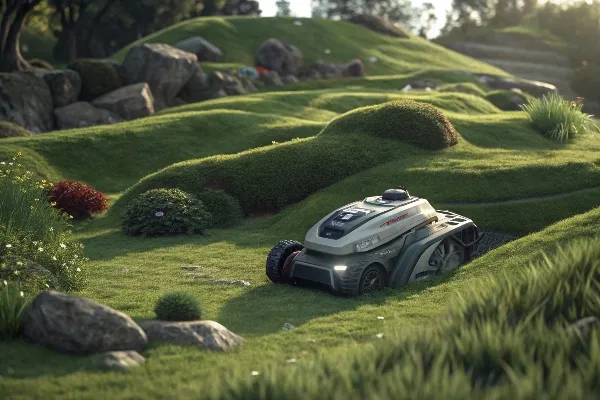
uneven lawn for robot mower
Robot lawn mowers can navigate slight to moderate slopes, depending on the model. Some advanced models are built with high-torque motors and large wheels that help them handle rough, uneven terrain. However, a steep slope can still pose a challenge, as robot mowers typically work best on flat or gently sloping lawns. If the lawn has significant bumps, ditches, or deep depressions, it might affect the mower’s performance and its ability to cut the grass evenly.
It’s also important to remember that the quality of the grass matters. For example, tall, thick grass on uneven surfaces may stress the robot mower, causing it to struggle or even stall. In addition, robot mowers can also encounter problems with objects like large rocks, tree roots, or garden furniture that could obstruct their path.
To get the best results on an uneven lawn, it’s advisable to choose a robot mower that is specifically designed for rougher terrain. These mowers tend to be pricier, but they come with more powerful motors, higher ground clearance, and better maneuverability. Always check the specifications of the mower to see if it’s suitable for your lawn’s terrain before making a purchase.
The convenience of robot mowers extends beyond daylight hours, but are they capable of working at night? Let’s explore this possibility.
Yes, robot mowers can work at night. Most models have built-in sensors and low noise levels, making them suitable for nighttime operation.
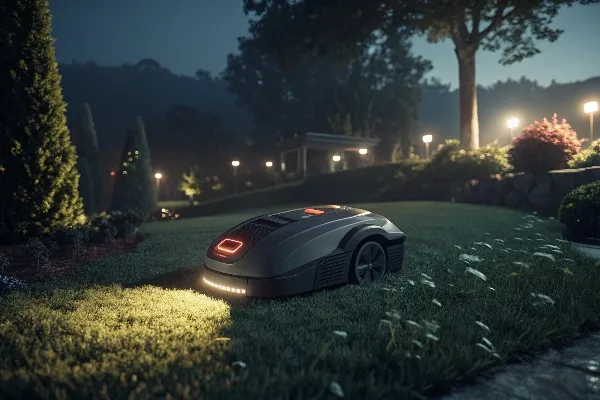
robot mower night work
One of the great features of robot mowers is that they can operate autonomously, day or night. Since they are relatively quiet compared to traditional mowers, they are perfect for mowing late at night when the yard is empty, and there’s less disruption to your daily routine.
Most robot mowers are designed with low noise levels, making them ideal for neighborhoods where noise ordinances may be in place or where neighbors prefer peace and quiet during the evening hours. Additionally, many models are equipped with LED lights or reflective markings, allowing them to operate in low-light conditions.
However, nighttime mowing does have its downsides. For one, visibility is reduced, and although the mower’s sensors can help it avoid obstacles, there’s always a possibility of the mower encountering an unforeseen object or terrain change. Moreover, since most robot mowers are equipped with rain sensors, they may stop their operation if it starts to rain overnight.
Therefore, while robot mowers can work at night, it’s important to consider the terrain and possible risks before setting them to operate in the dark.
What happens when your lawn has a hill? Can these robotic machines conquer an incline, or are they limited to flat terrain?
Yes, robot mowers can go uphill, but their ability to do so depends on the angle of the incline and the mower’s power. Most models can handle up to a 20-degree slope.
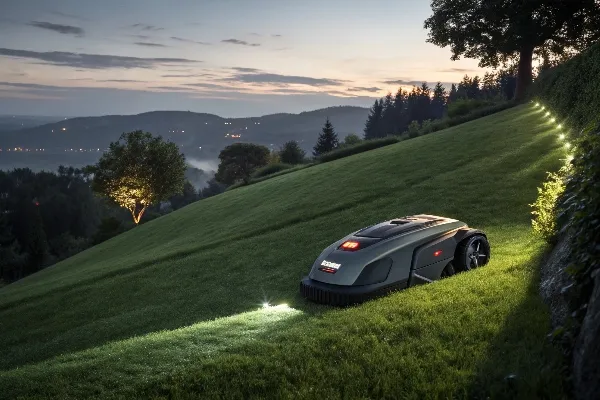
robot mower uphill
Robot lawn mowers are designed to handle slight to moderate inclines, making them perfect for lawns that have gentle slopes. Typically, most robot mowers can handle inclines up to 20 degrees, though some high-end models can manage steeper slopes. If your lawn has hills steeper than that, you may need to look into specialized mowers or consider alternative methods for cutting the grass.
When tackling uphill mowing, robot mowers use a combination of smart navigation and powerful motors to climb. However, if the mower is attempting to ascend a steep slope, there’s a chance it could struggle or even lose traction. To help mitigate this, some models come with larger wheels or enhanced motors that provide additional grip and power to climb those tougher slopes.
Before using a robot mower on a hilly lawn, make sure to check the manufacturer’s specifications for maximum incline capacity1. If your lawn has steeper slopes, it may be worth investing in a model with better climbing capabilities2 or looking for a mower designed for more challenging terrain
Can robot mowers cut wet grass, or do they struggle when the lawn is damp from rain or morning dew?
Robot mowers can cut wet grass, but it’s generally not recommended. Wet grass can clog the mower, affect its performance, and damage the blades.
Robot mowers are typically designed to work in dry conditions for the best results. While many models have rain sensors3 that automatically stop them from mowing when it’s too wet, some will operate in light rain or damp conditions. However, cutting wet grass can lead to problems such as clumping, clogging, and uneven cuts.
Wet grass is heavier and sticks together, making it more difficult for the mower’s blades to efficiently cut the grass. This can cause the mower to bog down or even damage the blades over time. Additionally, wet grass can stick to the mower’s deck, requiring more frequent cleaning and maintenance. This can shorten the lifespan of the mower and make it work less effectively.
Some models, however, are more equipped to handle damp conditions due to their design. These models typically feature a powerful suction system, high-quality blades, and better drainage to keep the mower performing well even in less-than-ideal conditions.
In general, if you want your robot mower to perform at its best, it’s advisable to wait until the grass has dried before mowing. However, if you must mow wet grass, make sure to choose a model that can handle such conditions.
When your robot mower cuts the grass, where does the clippings end up? Do they collect in a bag, or is it more eco-friendly?
Most robot mowers use a mulching system that finely cuts the grass and leaves the clippings behind on the lawn. This helps fertilize the lawn naturally.
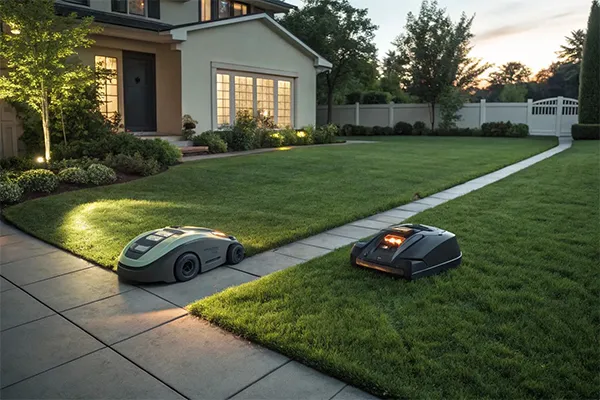
robot mower grass clippings
Unlike traditional lawn mowers that often collect grass clippings in a bag, most robot mowers are equipped with mulching technology. This means that instead of collecting clippings, they finely chop the grass into tiny pieces and leave them behind on the lawn. These small clippings break down quickly and serve as a natural fertilizer, providing nutrients back to the soil.
This mulching feature is highly beneficial for the lawn, as it eliminates the need to collect and dispose of grass clippings. It also helps keep your lawn healthier by providing it with additional organic matter. However, it’s essential to keep the mower blades sharp and the system clean to ensure it continues to work effectively.
Some robot mowers do offer collection bags as an option, though this is less common. These models allow for the collection of grass clippings, which can then be composted or disposed of. However, the mulching feature is more eco-friendly and convenient for most users, as it saves time and reduces the need for additional tasks.
Robot lawn mowers are a great addition to any lawn care routine, offering convenience and efficiency. By understanding their limitations and features, you can make the most out of your investment.